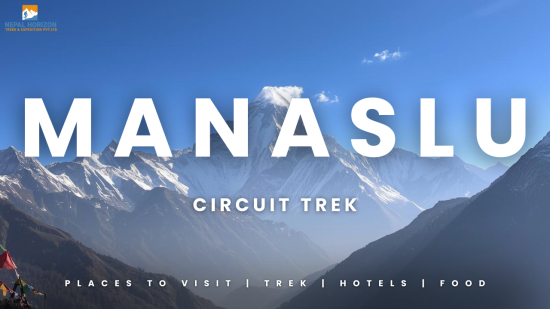Around Manaslu Trek Cost and Difficulty Breakdwon
28th June 2024

Nepal's Himalayas offer amazing trekking opportunities, but the Manaslu Circuit Trek is a lesser-known treasure. It features stunning views, cultural experiences, and challenging trails. Before beginning on this adventure, it's crucial to know the costs involved. This guide provides a detailed breakdown of the expenses associated with the Manaslu Circuit Trek, enabling you to make informed decisions and plan your trip effectively.
Cost Breakdown for the Manaslu Circuit Trek
The Manaslu Circuit Trek requires a range of expenses, which can be divided into the following categories:
Permits: Required to enter protected areas and national parks. Accommodation: Costs vary depending on the type and location of lodging. Food: Meal expenses include breakfast, lunch, and dinner.
Guides: Optional but recommended for safety and navigation. Transportation: Covers airport transfers, local buses, and private vehicles, as needed.
Permits Required:
Manaslu Restricted Area Permit (MRAP): Required because the Manaslu region is restricted. Costs vary depending on the season, ranging from $100-120/week during peak season (September-November) and $75-100/week during off-season (December-August). Manaslu Conservation Area Project (MCAP) Permit: Costs around $30.
Annapurna Conservation Area Permit (ACAP): Since the Manaslu Circuit Trek ends in the Annapurna region, it's also necessary to obtain an ACAP permit, which has a similar cost structure to the MCAP permit.
Accommodation: Tea Houses: Main source of accommodation on the Manaslu Circuit Trek. Cost: Basic rooms range between $5-$15 per night, depending on time of year and amenities. Food and Water: Meals: Budget $15-$30 per day for breakfast, lunch, and dinner. Prices vary based on dietary needs and location. Water: Bottled water is expensive. Bring water purification tablets or a filtration system to save money.
Guides: To ensure safety and proper guidance, hiring a licensed guide is strongly advised. Their fees range from $20-$30 per day based on their experience and skills. Porters: Trekkers seeking to reduce their load can consider hiring a porter. Porter fees vary from $15-$25 per day, depending on the weight of the items carried. Transportation: To reach the trek's starting point, usually Soti Khola, you'll need to combine bus and jeep rides from Kathmandu. Transportation costs range from $25-$50 per journey, depending on availability and destination.
Total Cost Estimation: The estimated total cost for the 14-18-day Manaslu Circuit Trek is between $1000 and $2000 per person. This estimate does not include international flights, travel insurance, personal gear, or additional expenses like snacks, souvenirs, and tips. Factors Affecting Cost Variations The cost of the trek can vary depending on several factors, including:
Season: Hiking during popular times typically costs more because permits and lodging demand is high. Group Size: Travelling with a bigger group can lower expenses because costs like guide fees can be divided among members. Preferences: Your choices for lodging, food, and extra services can affect the total cost.
Trek Difficulty
Embarking on a trek through the Himalayas is a coveted goal for adventurers craving a test of their resilience amidst breathtaking natural wonders. Among the many trails traversing this colossal mountain range, the Manaslu Circuit Trek emerges as an arduous yet exceptionally gratifying experience. Navigating remote paths, witnessing panoramic vistas, and embracing cultural traditions, this trek is an unforgettable escapade for those embracing its complexities. Within this comprehensive guide, we unravel the challenges awaiting trekkers on the Manaslu Circuit, equipping you with the knowledge to confidently undertake this epic adventure.
Altitude and Acclimatization: The Manaslu Circuit Trek's towering height poses a significant challenge. The trek's peak, Larkya La Pass, stands at 5,160 meters (16,930 feet). As hikers climb, the air becomes less dense, which can lead to altitude sickness. To prevent this, it's important to schedule rest days during the trek to allow your body to adapt to the high altitude. This gradual adjustment can reduce the risk of altitude-related symptoms such as headaches, nausea, and fatigue.
Terrain and Trail Challenges: The Manaslu Circuit Trek features a diverse landscape that tests trekkers' physical abilities. The terrain varies from dense forests and cultivated slopes to rocky rubble slopes and lofty mountain passes. The trails are often steep, rocky, and slippery, demanding strong legs and balance. Trekking poles enhance stability on uneven ground, while sturdy hiking boots with ankle support are crucial for navigating these rough paths. Trekkers should also expect fluctuating weather, from extreme heat to frigid temperatures and unexpected rain or snowfall.
Length and Duration: The Manaslu Circuit Trek is about 177 kilometers long and usually takes 14-18 days to complete. Each day involves several hours of trekking over varying distances and elevations, requiring both physical and mental fitness. The combination of long walking days, altitude, and challenging terrain can be demanding, so it's important for trekkers to adjust their pace, listen to their bodies, and take regular breaks to prevent exhaustion and injuries. Staying hydrated is also crucial for maintaining well-being.
Remote and Limited Facilities: The Manaslu trekking region is less developed compared to other famous trails in Nepal. Lodging and food options along the route are limited, with only essential amenities like tea houses. Expect basic accommodations with shared bathrooms, cold showers, and modest dining. Bring necessary supplies like snacks, water purification tablets, and medical basics to ensure your needs are met. Remote areas may have limited connectivity and emergency services, so it's crucial to prepare thoroughly and be self-reliant for a successful trek.
Cultural and Logistical Challenges: Trekking in Manaslu poses cultural and logistical obstacles that can increase the adventure. Trekkers navigate different ethnic groups, like the Nubri and Tsum Valley communities, who have their customs and traditions. Understanding and respecting these cultural norms is crucial for harmonious interactions and cultural exchange. Additionally, logistical hurdles like getting to the trailhead, obtaining permits, and overcoming language barriers demand thorough preparation and coordination to ensure a smooth experience.
Trekking the Manaslu Circuit is an unforgettable experience filled with stunning Himalayan views. It requires a substantial financial commitment, but the rewards are unmatched. By carefully considering the expenses involved and planning ahead, you can embark on this adventure with confidence. The Manaslu region offers a treasure chest of natural beauty and cultural insights, making it a journey to cherish forever. So, prepare to step into the heart of the Himalayas and embark on an odyssey that will leave an enduring impression.
Despite its inherent challenges, the Manaslu Circuit Trek is an extraordinary experience that offers unparalleled beauty, adventure, and cultural encounters. By acknowledging the difficulties of trekking through the Himalayas and preparing accordingly, adventurers can confidently embark on this epic journey. Overcoming the challenges of high altitudes, navigating rugged terrain, and connecting with local cultures adds to the profound rewards of completing the trek. Embark on this adventure with determination and embrace the stunning landscapes and transformative experiences that the Manaslu region has to offer.
Recent From Blogs
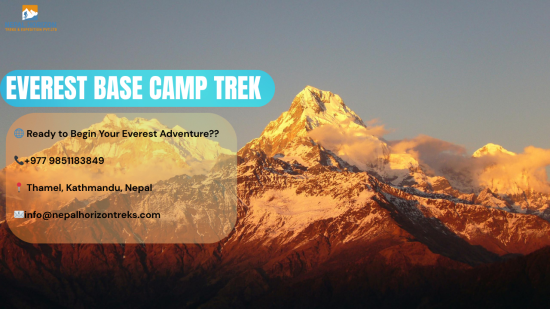
28th October 2025
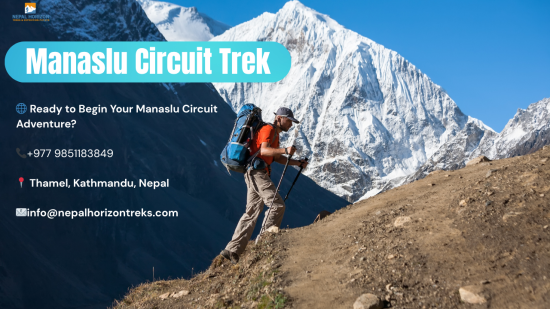
25th October 2025
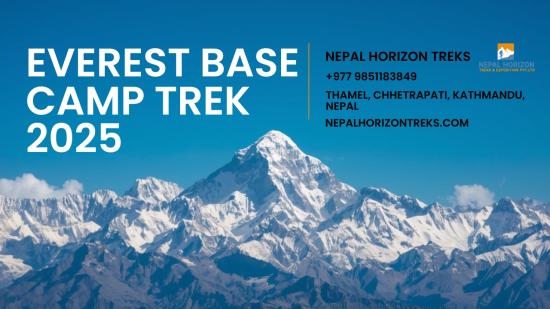
24th October 2025
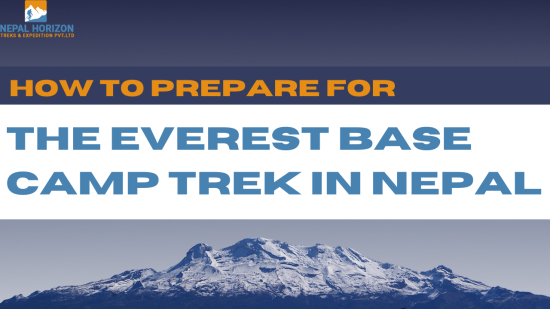
18th October 2025
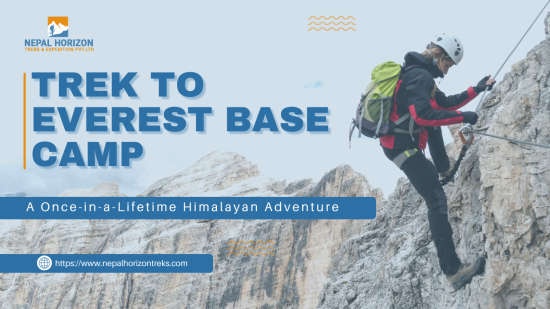
14th October 2025

12th October 2025
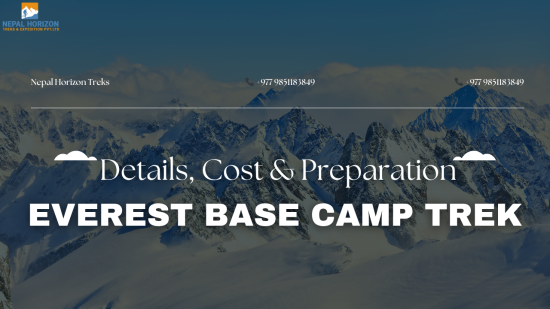
10th October 2025

7th October 2025


